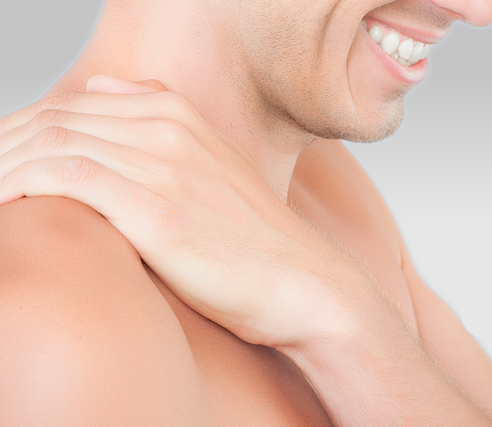- Home
- Medical Dermatology
- Rosacea
Rosacea Treatment
Rosacea
Rosacea treatment is available to reduce facial redness, improve red spots or blemishes, and achieve clearer-looking skin. Rosacea is a common skin condition affecting millions of people each year. Characterized by red, flushed skin, rosacea can cause self-consciousness and, in some cases, irritation and discomfort for patients. Thanks to innovations in laser and light-based technologies, different laser skin care techniques are available to reduce the symptoms of rosacea and bring about a smoother-looking complexion. Our dermatologists at Dermatology, Laser and Surgery of Flatiron have the expertise and experience to diagnose and treat rosacea and red spots using minimally invasive procedures that yield little-to-no downtime and recovery for patients.

| Rosacea Overview |
| Results in redness and inflammation of the skin |
More common in adults (age 30 or older), but can affect children |
| May cause itching, discomfort, burning, or pain in some cases |
Common rosacea triggers include: sun exposure, temperature, stress, spicy foods, and exercise |
| Some patients may experience acne-like bumps, as well as thickness or hardness |
Can be diagnosed by a board certified dermatologist |
| Usually occurs on the face, but can affect the chest, arms, neck, back, or eyes in rarer cases |
Light and laser treatments can reduce the effects of rosacea |
What Is Rosacea?
Rosacea is a chronic skin condition that can flare-up due to a variety of environmental and emotional factors, as well as lifestyle choices. Patients may experience facial redness during hotter temperatures, while in the sun, while stressed, during physical activities, or when eating spicy foods. These are just a few potential rosacea triggers. Rosacea is divided into 4 different subtypes, each with different symptoms:
- Erythematotelangiectatic Rosacea (Subtype 1): Patients may experience facial redness, a flushed appearance, and visible blood vessels below the skin.
- Papulopustular Rosacea (Subtype 2): Characterized by acne-like pimples, bumps, and swelling.
- Phymatous Rosacea (Subtype 3): Thickness or hardness may occur (commonly affects the nose).
- Ocular Rosacea (Subtype 4): The eyes may become red and irritated, while the eyelids might become swollen or puffy.
Rosacea Treatment At A Glance:
Laser treatment can be an effective solution for reducing redness and inflammation caused by rosacea. Our NYC dermatologists offer Pulsed Dye Laser (PDL) treatment and Intense Pulsed Light (IPL) therapy to lessen rosacea symptoms and can discuss which of these procedures is ideal for you during your rosacea consultation.
Pulsed Dye Laser Treatment (PDL) For Rosacea
During your PDL procedure, pulses of light energy are directed to underlying blood vessels that contribute to facial redness. Laser heat can disrupt these blood vessels without causing damage to the skin or surrounding tissues. Over time, these blood vessels will gradually fade from view.
Intense Pulsed Light Therapy (IPL) For Rosacea
IPL treatment uses light energy to target blood vessels beneath your skin. A concentrated beam of pulsed light is directed to the treatment area and is absorbed by underlying blood vessels, effectively disrupting them. Your body will naturally absorb these unwanted blood vessels over time, reducing facial redness and blemishes.
| Rosacea Laser Treatments |
| Pulsed Dye Laser Treatment (PDL) |
Pulses of light are directed to blood vessels under the skin |
Minimally invasive treatment |
Multiple treatments may be required |
Yields minimal downtime |
| Intense Pulsed Light Therapy (IPL) |
Concentrated beam of light is delivered to underlying blood vessels |
Minimally invasive procedure |
May require multiple sessions |
Little-to-no recovery time necessary |
How Many Laser Rosacea Treatments Are Required?
Generally, a series of laser rosacea treatments are required to achieve optimal results. You may require anywhere from 2-6 sessions, depending on the specifics of your procedure. Our team of NYC dermatologists at Dermatology, Laser and Surgery of Flatiron can further discuss your rosacea treatment details during your in-office consultation.
Who Is Considered An Ideal Candidate For Rosacea Laser Treatment?
Candidates for rosacea treatment include those who would like to reduce blemishes and facial redness. Depending on the extent of your rosacea, as well as your subtype, you may be a candidate for either Intense Pulsed Light therapy or Pulsed Dye Laser treatment. Our team at Dermatology, Laser and Surgery of Flatiron can help advise whether laser rosacea treatment is right for you during your consultation at our New York City offices.
Is Anesthesia Recommended?
Patients do not normally require anesthesia when undergoing rosacea treatment using laser therapy. A topical numbing cream can be applied to ease discomfort.
What Should I Expect After Undergoing Laser Treatment For Rosacea?
There is little-to-no recovery time necessary after undergoing laser rosacea treatment. Most patients are able to resume normal activities immediately. You may experience slight redness or sensitivity for a few days following your procedure. Patients are encouraged to frequently moisturize, apply sunscreen, and limit sun exposure in the weeks after treatment.
What Kind Of Rosacea Treatment Results Can I Expect?
Laser therapy can reduce the appearance of rosacea, limit facial redness, and achieve a clearer-looking complexion. Intense Pulsed Light therapy and Pulsed Dye Laser treatment can each yield long-lasting results.
How Do I Get Started With Rosacea Treatment?
The doctors and staff at Dermatology, Laser and Surgery of Flatiron would be happy to discuss your rosacea treatment in more detail. Please give us a call at 212-982-8229 or request an appointment online for a personal consultation at our New York offices.